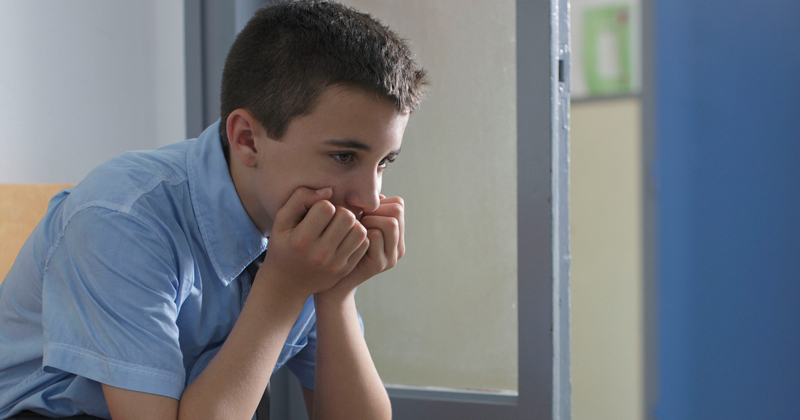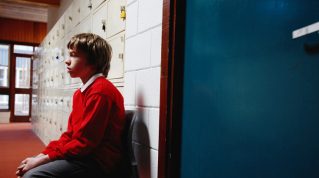Schools will face a legal duty to record their use of non-disciplinary isolation and report it to parents under plans being developed by the government.
The decision to legislate for the new duty, which will not cover the use of isolation as a punishment, has delayed the publication of final guidance on restrictive interventions in schools, which is being re-drafted.
Isolation is often used to describe both “seclusion” and “removal”, but the two are different.
Seclusion is defined by government as the “supervised confinement and isolation of a pupil, away from other pupils”. Whereas “removal” is “where a pupil, for serious disciplinary reasons, is required to spend a limited time out of the classroom”.
Ministers consulted in February on new guidance that will require schools to record every “significant” use of reasonable force against pupils and report them to parents “as soon as practicable”.
Draft guidance ‘further updated’
The draft guidance, which was supposed to come into force in September, stated that restrictive interventions “may include use of seclusion”. It defines seclusion as the “supervised confinement and isolation of a pupil, away from other pupils, in an area from which the pupil is prevented from leaving of their own free will”.
However, the draft guidance also stated that the law “does not require schools to record and report instances of restrictive interventions where force was not used”, stating only that it was “best practice” to apply the same policy for all interventions.
However, the Department for Education told Schools Week it plans to legislate for a separate, specific duty “to ensure the use of seclusion is recorded and reported to parents”.
As a result, the draft guidance “is being further updated to include additional advice about this new statutory duty, as well as reflecting findings from the consultation. We aim to publish the guidance and legislation by the end of the year.”
‘Genuine effort’ to listen to feedback
Charlie Blackman-Doyle, a local authority specialist teacher, said: “If the delay reflects a genuine effort to incorporate sector feedback, then it should be welcomed.
The inclusion of a new reporting and recording duty for incidents of seclusion is a positive and necessary addition to the DfE’s proposed guidance.
Its success, however, will depend on the clarity of the final guidance.”
It is not clear why the government is planning a legal duty to record and report seclusion but not isolation as a punishment – which has become an increasingly controversial behaviour management tactic.
Behaviour guidance states schools “should collect, monitor and analyse removal data internally in order to interrogate repeat patterns and the effectiveness of the use of removal”. But that guidance is non-statutory.
The news comes after research published by the British Educational Research Journal found spending time in isolation rooms due to poor behaviour is resulting in pupils feeling reduced belonging, having poorer relationships with teachers and some reporting lower levels of mental wellbeing.
The research found one in 12 pupils reported being placed in isolation, also known as internal exclusion, per week. The average time spend in isolation was 8.5 hours a week.
It also comes after pupils who spent up to half a year in “unpleasant and distressing” isolation rooms lost a High Court battle against their school’s “rigorous” behaviour policy.
High Court judge Justice Collins Rice called the practice “stigmatising” and “deliberately under-stimulating” – but found John Smeaton Academy in Leeds had not “crossed the boundaries of what the law or good practice permits”.
















It’s actually quite scary to read articles like this. They highlight how poorly-educated school staff, governors, and other educational professionals really are. The definition of seclusion, found in the new guidance, literally describes a breach of human rights (an area from which the pupil is prevented from leaving of their own free will). It then states that these breaches do not need to be reported. Holy crap. It’s bad enough that schools falsify physical intervention (PI) records, or fail to inform parents of incidents involving PIs. Now they’re being told not to inform parents of incidents where their child has been held captive. Another reason why Senior Leaders, Governors and other child abusers believe they are untouchable.
I agree with Pam! Are children spending their days in supportive Educational Establishments or prisons? Children with emotional difficulties clearly need to spend their days in a very different atmosphere to that provided by schools today. Home Education is rapidly increasing and perhaps the Government should consider the upcoming Educational Evolution to cater for less academic pupils who are talented in other areas of life – more physical activities, apprenticeship for manual work and creative pursuits!
There are of course two sides here, and I would not like to see any child needlessly secluded, it is important to read that they are supervised not just in a room alone. Some just want that one on one attention, they often are not getting this at home.
I work in a non teaching capacity at a large junior school and we have many children who become violet with other pupils and staff. They can and should be removed from class if they pose a danger to others. (If they are even in class , we have several who are very rarely even in class from the minute they get there). Staff do their best to keep difficult pupils in class, however, some classes have several disruptive pupils though and not always a TA.
Internal exclusions (supervised) are very rare in our school and are only really used in response to violent behaviour, and even then it had to be serious. There probably should be more, but we don’t really have the staff to cover them. Parents as far as I know are always informed of internal exclusions.
The real question is why these violent and extremely disruptive pupils in mainstream schools, not getting the support they should get from specialist staff. It hurts the education of the majority of well behaved pupils and does the pupil themselves no favours.
If you don’t see it with your own eyes it’s hard to believe how bad the behaviour and disruption can be from a minority. I have seen this week staff members in tears and bruised from the young kids. One staff member now has a long standing hand injury from one incident involving a year three, very young but very violent.
I intervened last week to separate two pupils during class time who were in the corridor with one throttling the other against a wall. These are kids under ten. Year 4 and 5 kids. They were both with adults but must have run off down the corridor, they are so quick when they want to be. This is not an isolated case. I never believed things could be so bad and they have gotten worse in the few years I’ve been there alone.
It is a failing of governments for these pupils and staff alike.